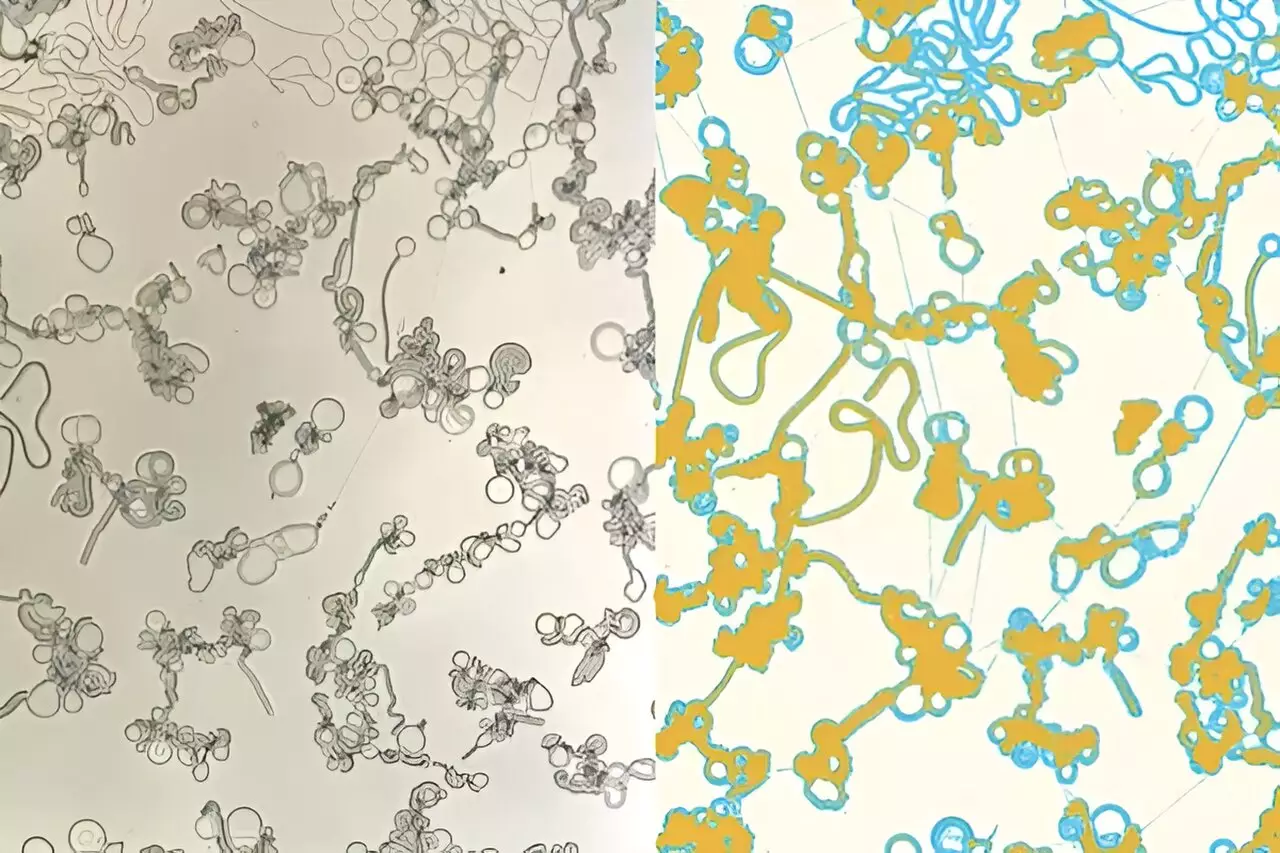Liquid crystals have infiltrated various aspects of modern technology, becoming integral to devices such as smartphones, gaming consoles, dashboard displays in vehicles, and a myriad of medical instruments. Their extraordinary ability to respond to electric currents allows them to produce an array of colors, a phenomenon attributed to their unique molecular structure. When subjected to an electric field, these fluidic substances can rearrange their formation, enabling them to selectively reflect different wavelengths of light. However, recent breakthroughs in research have unveiled an even more compelling dimension to liquid crystals: their potential to self-assemble into intricate structures that resemble biological systems.
Under the guidance of Chinedum Osuji, the Eduardo D. Glandt Presidential Professor and Chair of Chemical and Biomolecular Engineering, a groundbreaking study was conducted in a collaborative framework that combines insights from chemical engineering with biological principles. This interdisciplinary approach was fostered within the Laboratory for Research on the Structure of Matter (LRSM), where researchers dove deep into the nature of condensate formation across diverse systems. A pivotal partnership with industries like ExxonMobil laid the groundwork for examining mesophase pitch—a critical precursor in high-performance carbon fibers utilized in premium products such as Formula 1 vehicles and advanced sporting equipment.
During experimental trials that involved altering temperature conditions, a postdoctoral fellow named Yuma Morimitsu stumbled upon extraordinary behavior in liquid crystal materials. The expected phase separation outcome following heat application was disrupted; instead of merging into identifiable droplets as would typically happen between immiscible fluids (like oil and water), the liquid crystal 12OCB exhibited unpredicted and complex formations—evolving into cascading filaments and distinctive flat disks that captivated the researchers.
Further probing into these structural anomalies revealed a fascinating aspect of liquid crystals: they not only separate in unconventional ways but do so in a manner akin to biological systems that transport materials. With the use of advanced microscopy techniques, researchers were able to visualize these spontaneous formations on the micrometer scale, which is extraordinarily tiny—measured in millionths of a meter. Initial observations were made under rapid cooling conditions, which led to misinterpretations of the liquid crystal behavior. However, by adjusting the cooling rate and employing improved imaging tools, the true nature of the dynamic interactions began to unveil itself.
This study aligns with earlier, albeit less successful, attempts by scientists who had observed similar phenomena in the past but either lacked the necessary technology or were unwittingly looking in the wrong contexts. The current findings resurrect discussions surrounding active matter research—a field dedicated to understanding materials that exhibit self-propulsion and dynamic activity—while simultaneously straddling the realms of self-assembly and phase behavior.
The findings put forth by Browne and Osuji signify a revolutionary intersection of disciplines, providing fertile ground for exploring new avenues in material science. The implications of this research extend beyond mere academic interest; they pave the way for improved understanding of biological processes and the potential engineering of sophisticated materials. The filaments and disks formed by liquid crystals represent a transformative mechanism—not unlike the functional systems found in living organisms—conducive to continuous material transport and reaction processes.
This study’s potential applications are vast. For instance, the research indicates that the flat droplets resulting from the liquid crystal behavior could act as micro-reactors, enabling ongoing chemical interactions and deliveries within the material. This innovation could not only enhance current technological capabilities but could also restore vigor to fundamental research in liquid crystals, a realm that may have stagnated as industrial demands overshadowed investigative pursuits.
The revelation of liquid crystals’ capacity to engender lifelike structures that transport materials evokes a new era in material science. This newfound understanding encourages a reselection of focus towards liquid crystals in fundamental research while simultaneously nurturing potential pathways for technological advancements. As researchers bridge the gap between self-assembly and active matter, different scientific fields may collaborate in ways that yield impressive outcomes—garnering insights that could revolutionize how we perceive and utilize materials in both biological and non-biological contexts. With the backdrop of interdisciplinary collaboration, the future of liquid crystal research promises exciting prospects, hinting at capabilities that were once confined to the realms of imagination.


Leave a Reply